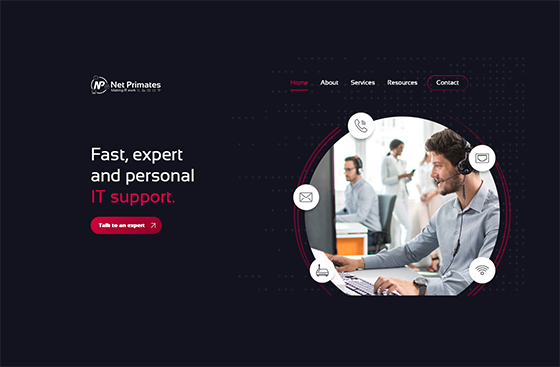When we think websites, we generally think marketing tool. So, making improvements to our website, or having a new one built, can be considered a purely marketing exercise. However, there are security implications to consider as well.
Yes, we all love a shiny new website that tells a great story, looks amazing and works well on all devices (we are delighted with our new site and yes, we’re proud to show it off). But having a new website built isn’t just about styling. Old websites can be open to security breaches so it’s worth considering whether your website is fit for purpose, not just in terms of marketing but also for the safety of your business.
Ageing websites are often susceptible to cyber threats due to the use of old software or plugins. Regular updates become imperative to create a robust defence against the ever-evolving landscape of cybersecurity challenges. Security measures are not only about protecting sensitive information but also about instilling confidence in users who increasingly prioritise secure online interactions.
We recently caught up with Jack Manley of Freestyle Web Design (who have developed and maintained our website for a number of years) and he explained why website security is important.
“Here are the considerations you should keep in mind:
Update Your Software: The primary way websites get compromised is through outdated software with known vulnerabilities. To maintain security, ensure your website is always running the latest software and consider a provider that regularly updates critical software components. Avoid using outdated software to prevent security breaches.
Limit Plugin Usage: If you’re using a WordPress site, it’s recommended not to exceed ten plugins. Increasing this number increases the risk of outdated plugins leading to vulnerabilities. Keeping the number low helps maintain security.
Maintain Licences: Make sure you have the necessary licences for software used on your website, such as those for contact forms, compression, and SEO tools. Without valid licences, your website becomes more susceptible to hacking attempts.
Enhance Login Security:
- Avoid using the default username ‘Admin’ to minimise the information hackers need. A unique username provides an added layer of security.
- Use complex passwords, ones that are not reused from other accounts.
- Implement two-factor authentication where available, which can include texted passcodes, authenticator apps, or emailed links. This added security layer safeguards your site, even if your username and password are compromised.
DNS-Level Security: Consider implementing DNS-level security software like CloudFlare. This service automatically blocks known malicious IP addresses, preventing unauthorised access. It also provides protection against DDoS (Distributed Denial of Service) attacks, which can overwhelm your website with traffic and potentially lead to server vulnerabilities.
By following these steps, you can significantly enhance the security of your website and reduce the risk of cyberattacks.”
In conclusion, as with all areas of IT and cybersecurity, it’s always worth evaluating what needs to be replaced in order to remain efficient, current and secure. The decision to get a new website is a strategic move that goes beyond mere aesthetic considerations. As the digital landscape evolves, staying current becomes imperative not only for the sake of competitiveness but also for building a secure and trustworthy online presence.





